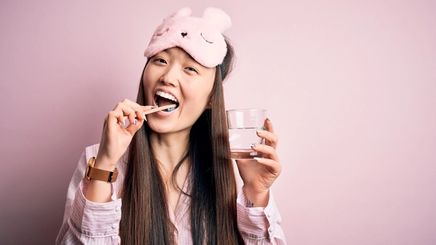
Having a good oral care routine is one of the more personal things we practice as part of everyday . Taking care of our teeth, gums, and mouth contributes directly not just to our bright, beautiful smiles, but more importantly, to our overall health. Good oral health care helps keep plaque and bacteria that lead to plaque and tooth decay under control.
Most of us have a general knowledge of what needs to go into taking care of our teeth, but in this article you’ll find out how you can go the extra mile, for an extra confident smile.
How to Up your Oral Care Game
Good oral hygiene involves more than just brushing your teeth. Here are a few ways you can up your oral care game for your freshest and healthiest smile yet.
1. Brush your teeth at least twice a day.
This is one of the first things we’re taught as children, and for good reason! Bacteria and saliva can build up in the mouth pretty quickly while we’re sleeping, and brushing in the morning helps get rid of this buildup, along with morning breath. On the other hand, experts recommend brushing your teeth after dinner and before bedtime as well, if you are susceptible to gum problems and to avoid plaque.
You should also spit, not rinse, since rinsing washes away the fluoride. The best fluoride toothpaste protects the enamel on your teeth from tooth decay and cavities. Products such as or closeup Red Hot Toothpaste checks these requirements. And, like all menthol products, it gives you instant fresh breath.
Pro tip: Dental hygienists actually recommend brushing teeth before breakfast, (instead of after) as part of a proper oral care routine. The fluoride in toothpaste protects teeth from the acids and sugars you may have had, and might rub into teeth with brushing. In this instance, you may rinse your mouth with water afterwards (minty fresh breath and orange juice don’t quite go well together, after all).
Choose the best fluoride toothpaste for your needs by testing different closeup variants. Which one do you like best?
2. Make flossing a daily habit.
Dental floss can reach areas that the bristles on your toothbrush can’t, so it’s important to floss daily to help prevent plaque and food between teeth that may cause bad breath and tender gums. It is recommended to floss before brushing, since flossing dislodges any buildup or food residue between teeth — you’d want to brush that stuff away after.
Gently move the floss up and down between teeth. Make sure you floss both sides of the teeth. Don’t forget to — again, gently — floss the base of your teeth. Do this by starting from the curved base and swiping upward.
Pro tip: Use 18 inches of floss every time. At this length, you’ll have enough clean sections of floss to cover all your teeth. As you near your gums, don’t forget to floss that C-shape at the base of your teeth and give it a nice, thorough cleaning.
3. Brush your tongue.
The truth is, your tongue is covered with bacteria. If bacteria can sit between your teeth, it can definitely grow on the textured surface of your tongue. It is between the taste buds that bacteria accumulate, and brushing your tongue is an important part of a good oral care routine. If a tongue scraper isn’t quite your thing, you can clean your tongue with your toothbrush and a bit of toothpaste.
Start from the back of your tongue, brush to the front, and then go all the way back again. Repeat this a few times. Cleaning your tongue reduces bacteria that cause bad breath, as well as gives you a fresh feeling in your mouth.
Pro tip: Cleaning your tongue also improves your sense of taste! If you want a more acute ability to distinguish flavors (or simply wish to enjoy food better), clean your tongue twice daily.
4. Use mouthwash — but not after brushing your teeth.
Mouthwash is a great way to freshen up and feel confident with your smile on the go. It rinses away food particles, fights against plaque between teeth and gums, and prevents cavities. It’s a common misconception to use mouthwash right after brushing.
This washes away the nice coating of fluoride you just got from your toothpaste. The fluoride needs to stay on your teeth for it to do its job, so use mouthwash at other times of the day, like after lunch. Avoid eating or drinking for at least 30 minutes after rinsing with mouthwash.
Pro-tip: Are you sure your mouthwash is giving your teeth and gums the protection they need? Check the label for fluoride! You want a mouthwash that has fluoride and a lot of them actually don’t have it.
5. Remove stains from teeth.
Prevention is always better than cure, so you could avoid drinks that stain, such as tea, coffee, or red wine — but that’s no fun. If you already have stains and don’t want anymore, find the best toothpaste for whitening.
Brush with a whitening fluoride toothpaste like closeup Natural Smile Toothpaste after consuming stain-causing drinks. It has lemon essence and sea salt for healthy teeth whitening. The citric acid in lemon makes it a natural bleaching agent, while the sea salt acts as a gentle abrasive that removes stains.
Pro tip: Diet can also contribute to healthy teeth whitening. A diet that is high in sugar is a big no-no because it supports the growth of bacteria that causes plaque and gingivitis. It’s also important to get plenty of calcium, which supports teeth enamel and prevents erosion.
Simply follow these oral care hygiene tips and you’ll be on your way to a fresh and confident smile, and better health.